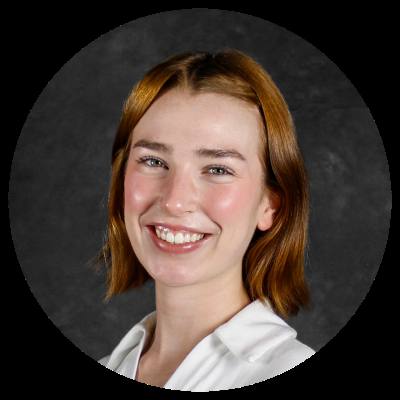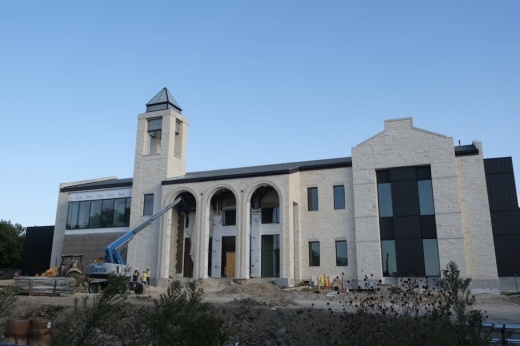Professor Robert Bednar, co-chair of the university’s strategic planning committee, said Trombley’s approach is unique, favoring actionable items over abstract ones to create a “measurable, live document.”
“We have giant goals, but we have to get them tied down to, ‘What are we going to do to make them happen?’ and ‘How are we going to do them?’” Bednar said.
The plan, which spans 2021-26, includes extensive campus renovations and new construction projects, and focuses on expanding academic offerings, improving compensation for faculty and staff, and increasing the school’s national recognition and community engagement within Georgetown.
The big picture
Southwestern’s five-year tactical plan has five central priority areas: diversity, inclusion, belonging and equity, or DIBE; student retention; program development; physical and technological infrastructure; and competitive compensation.
The strategic planning task force created these priority areas after receiving community feedback in 2020, Bednar said.
“We had broad inputs, and we sorted through them and coded them and themed them until we saw these points of emphasis start to cluster together,” Bednar said.
Four years in, the university has achieved 89% of the plan. So far, a key tactic has been making school more affordable for students, Trombley said. Decreasing student debt is the first tactic included in the plan’s funding priorities.
“Providing additional financial aid to our students is absolutely essential because it’s really all about access,” Trombley said. “That is very quickly becoming a real concern of ours because of what we see as cuts in students’ ability to access student loans.”
Other key accomplishments in the first four years of the plan include fundraising over $83 million, which contributed to successfully completing the $150 million Thrive campaign. The fundraising initiative began in 2017 and contributed to increased financial aid, paid student internships, endowed faculty positions and campus capital improvements.
“When we created the tactical plan, we did it in aligning with our ability to fundraise,” Trombley said. “So the two were always on a parallel path from the very start.”
Digging deeper
The strategic planning task force specifically highlighted DIBE and retention as the two most immediate concerns for the tactical plan, with the majority of the tactics going toward these objectives.
One reason for that is to uphold the “lifecycle of a student,” Trombley said.
“You come and you spend four years with us, and then become an invested alum and you stay in touch with us,” Trombley said. “In addition to hopefully assisting you into graduate school or into your first career through our career center, you will also then choose to mentor one of our students and perhaps help them along the way.”
One key accomplishment of the plan’s DIBE efforts is Southwestern’s new designation as a Hispanic-serving institution, which means 25% of the full-time undergraduate enrollment is Hispanic.
The school is the first top-85 liberal arts institution according to U.S. News & World Report to receive this designation.
“This is just part of the growth that we have seen because that is a part of the population that’s actually growing when it comes to students going to college in the Southwest,” Trombley said.
Also of note
With infrastructure also being a priority of the tactical plan, the university has worked to modernize its physical campus through capital improvements.
“Part of the beauty of our campus is that it’s very, very old,” Trombley said. “That is exactly the challenge.”
One key renovation was of Mood-Bridwell Hall, originally built in 1908. Upgrades include new classrooms, community spaces and a cafe, and it was the first major capital improvement completed, Vice President for Facilities Management Amanda Barber said.
The university is also constructing two new residence halls, as well as a welcome center with an art gallery and theater, leveraging fundraising dollars and an $80 million bond.
“[The residence hall] is making a fundamental improvement in our ability to house students on campus,” Barber said.
In other news
Southwestern University is also undertaking an initiative to develop 560 acres east of campus. Integrating housing, industry, retail, arts and green space, SU 560 will “provide opportunities and amenities that aren’t currently offered,” Trombley said.
The first phase will cover about 67 acres. Although still in the early planning stages, the first buildings could open as soon as 2027, according to the development’s website.
While the university owns the land, it is working with Arterra Development to actualize its vision.
“The university had 500 acres of land smack dab in the middle of Georgetown ... and said, ‘How can we not do something mission-driven from the university, something great for the community of Georgetown, and help generate revenue for the university all at the same time?’” Arterra Development CEO Greg Weaver said.
Looking ahead
The university will begin construction soon on its completely donor-funded $9.2 million multipurpose sports complex. Located on the current football practice field, it will feature grandstands, synthetic turf, modern locker rooms and an arena.
This project will bring football back to campus for the first time since 1950, supporting sports and major university events like commencement.
With the completion of the tactical plan nearing, Trombley said the strategic team will begin working on the next tactical plan, to be adopted at the end of this academic year. The university will also look at an academic strategic plan to add new majors like mechanical engineering, Trombley said.
Bednar said he expects the next five-year plan to be a lot shorter because of the work accomplished from the first plan.
“Given that we’ve addressed some of the details, I think there’s an opportunity to work at a different level that’s kind of in between the details that have been taken care of and the larger goals,” Bednar said.
Q&A with President Laura Trombley

Who inspires your leadership and vision for the university?
I think a really impactful role model when I was growing up was my mother because she started as an elementary school teacher and wound up as one of the first woman principals in Los Angeles at the time.
And, she was a professional at a time when that was very unusual because it was very male-dominated.
What would you say is your biggest accomplishment since you started in 2020, personal or professional?
I always teach first-semester, first-year students, and it’s just a real joy to watch them develop during their time. This past commencement, a pretty good number of my students were graduating, and you just feel as though that you’re really part of something bigger than yourself that’s contributing to the greater good.
How does SU differ from when it was first founded?
Southwestern is an old university, ... and we are dramatically different in terms of really our entire community than when we were first founded.
Then, we were really a tiny institution, and we were really focused on educating white men to become teachers and Methodist missionaries. And so, as time has passed, we now much more closely resemble our population in Texas. And I think I’m evidence of that openness to change in that I’m the first woman president.





